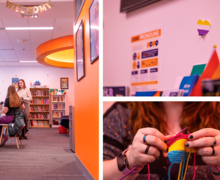Rodgers: University should better address the needs of homeless students
The Syracuse University and SUNY-ESF communities came together last week to raise money for Habitat for Humanity and bring awareness about homelessness and affordable housing. But while events like Shack-A-Thon accomplish great work and raise money, but more services should be provided by universities to assist students that struggle to keep a roof over their heads.
Homeless college students are a population that some Americans assume don’t exist, or believe homelessness amongst college students could not possibly be a problem. Although hard data for this crisis is limited, the Free Application for Federal Student Aid estimated in 2013 that there were 58,000 homeless students on campuses across the nation.
Relating to homelessness, not being able to afford food is another crisis facing students on America’s college campuses. According to Feeding America — the country’s largest emergency food assistance network — one in 10 of its 46.5 million clients are students. Food stamps are a common way that many college students attempt to combat lack of income for food, but many eateries on and around college campuses do not accept food stamps as a form of payment.
Specifically here at SU, Hendricks Chapel has seemed to address and fight student hunger on campus with its food pantry services. Located on the first floor of the chapel, many students in need of assistance have taken advantage of the services offered by the chapel.
But student homelessness and unaffordable campus housing are areas that have yet to be addressed on SU’s campus, as well as other universities’ campuses. Although financial aid and scholarship services exist to aid students with tuition, they do not always offset the costs of basic necessities that every student needs. More attention and research should be put into this unrecognized portion of the population to better provide services for their needs.
SU should look to other colleges that have successfully addressed this issue, such as Kennesaw State University in Georgia. According to the school’s website, the Campus Awareness, Resource and Empowerment Center was created to help homeless students and/or students that are at risk for becoming homeless. The C.A.R.E. Center at Kennesaw is designed to address the physiological, safety and daily needs of homeless students and provide resources for them on and off campus. A model similar to that of the C.A.R.E Center at Kennesaw should be something adopted by other universities, including SU.
Shack-A-Thon is a successful event for Habitat for Humanity in the Syracuse community, but the idea of raising awareness for homelessness in Syracuse, especially amongst students, can be expanded into even more tangible and impactful services for those who need them most.
Nina Rodgers is a junior sociology major. Her column appears weekly. She can be reached at nmrodger@syr.edu.
.
Published on September 30, 2014 at 12:27 am





